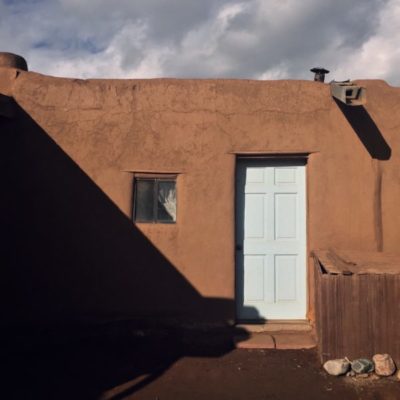A home is meant to be a safe space, free of violence and where one can thrive and nurture their family. However, safe housing and shelters can be hard to come by when you’re a victim or survivor of domestic violence, especially when you’re living in a tribal community.
A recent study by the National Institute of Justice analyzing data collected by the Centers for Disease Control and Prevention (CDC) found that more than four in five American Indian and Alaska Natives had experienced physical violence in their lifetime, and at least one in three had experienced violence within the past year.
The study also found that nearly 40 percent of Native victims of domestic violence (DV) reported unmet service needs, meaning they cannot locate or access culturally appropriate shelters and other supportive services within their community.
Across the nation, fewer than 40 tribal DV shelters serve Native communities, according to the National Indigenous Women’s Resource Center. With limited options, Native victims of domestic violence have few safe places to seek help.
Earlier this year, the StrongHearts Native Helpline launched operations as a culturally appropriate, confidential helpline for Native Americans experiencing domestic violence and dating violence. As a partnership of the National Indigenous Women’s Resource Center and the National Domestic Violence Hotline, StrongHearts (1-844-7NATIVE) offers support, safety planning, crisis intervention and resources, Monday through Friday from 9 a.m. to 5:30 p.m. CT, in a culturally relevant way – unique to the needs of Native people.
We spoke with Mallory Black (Navajo), communications manager for the StrongHearts Native Helpline, about what tribal housing professionals can do to support Native survivors of domestic violence.
Q: What does domestic violence look like?
A: When we think about domestic violence, images of black eyes and bruises are the first to come to mind. Yet, what we forget is that abuse can be emotional, cultural or spiritual, digital and financial, too. Name calling and put downs, threats, and sharing private photos or secrets about your partner online are also abusive behaviors. Whatever the situation may be, domestic violence is about power and control, where one partner will do whatever they can to gain and maintain control of their partner.
For partners who live together, an abusive partner may use physical violence along with other behaviors like preventing their partner from leaving their home, controlling their money or bank accounts, or forcing their partner to pay rent on their own. They may even intentionally hurt their partner’s credit by missing rental or utilities payments. In the tradition of our ancestors, we know that domestic violence is not a Native tradition, so we need to speak out and say it’s not okay. All Native people have a right to safety and to live their lives free of abuse.
Q: When we’re talking about domestic violence in Indian Country, what are the effects on a Native victim in relation to safe housing?
A: What we know is that Native victims of abuse face greater barriers to getting help and seeking safety when compared to other groups. Many tribal communities are in remote areas, so there’s a geographic barrier to accessing supportive services. The result is that Native survivors are more likely to stay with their abusive partner without a safe place to go for help. Native victims may also face poverty and homelessness if they choose to leave their abusive partner. They might also fear losing custody of their children if they leave because of the cross-jurisdictional issues.
One of the biggest barriers a Native victim can face is the difficult decision of leaving their home – their family and tribal community – to escape the abuse, which isn’t an easy decision to make. Native people should never be forced to choose between staying in an unsafe home or no home at all.
Q: Is there anything tribal housing professionals can do to better support Native survivors?
Absolutely! The biggest takeaway for our tribal housing allies is to understand the unique needs of Native survivors in our communities and the barriers they face. Something to consider is whether your tribal housing codes or policies have unintended consequences for victims of DV. Victims of domestic violence should never be punished for the actions of their abusive partners.
Also, don’t be afraid to partner with your tribal DV program and victim advocates, tribal police and health centers to strengthen the conversation and work around the issue of domestic violence together.
Lastly, you can support a survivor’s safety and autonomy by offering resources like the StrongHearts Native Helpline to allow them to explore their options confidentially. Through StrongHearts, Native callers can receive culturally appropriate support and referrals to resources (Monday through Friday from 9 a.m. to 5:30 p.m. CT) by calling 1-844-7NATIVE (762-8483). You can also direct people to our website at strongheartshelpline.org for more information about domestic violence and dating violence.
At the heart of it, domestic violence is not a Native tradition, and we need to remind each other that abuse is never okay.
To learn more about the connection of safe housing and domestic violence, the StrongHearts Native Helpline is hosting a session at the annual National American Indian Housing Council Convention taking place June 27-29. Please visit the NAIHC’s website for the agenda or email info@strongheartshelpline.org. Please come say hi!
Mallory Black is a member of the Navajo Nation and the communications manager for the StrongHearts Native Helpline. Contact Mallory at mblack@strongheartshelpline.org.


